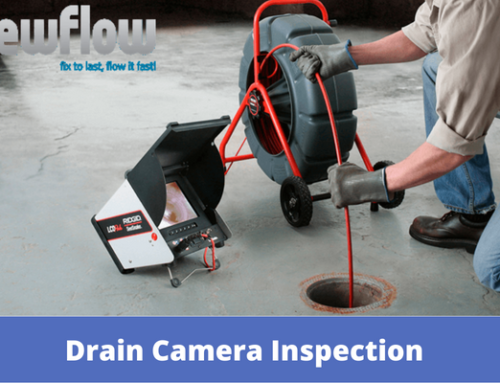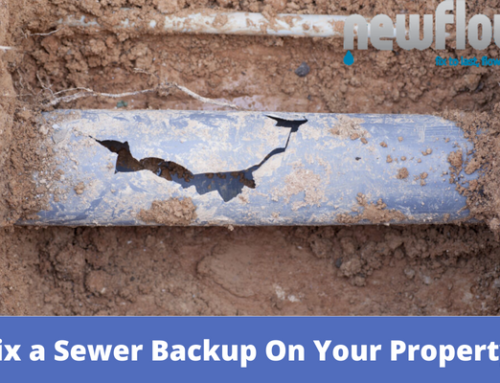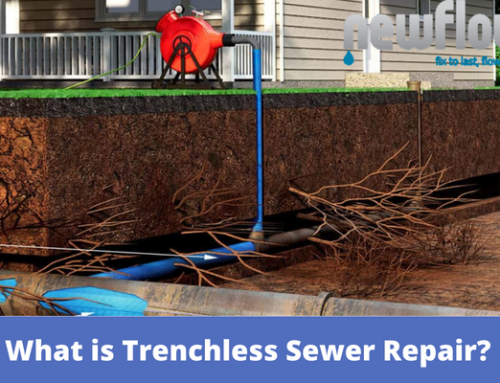Is it Time to Replace Your Drain Pipes?
By New Flow Plumbing Inc.|Published On: December 18th, 2020|Categories: Residential Plumbing, Sewer Systems|
Why do drain pipes fail?
There are multiple types of drain pipes that have been used throughout the United States. Most drain pipes were built to last at least 50 years. But since most homes are starting to reach their old age including their plumbing systems, the drain pipes begin to show signs of failure.
Clay Pipes – Made of clay and water, clay was the material of choice from the 1880s to the 1900s. They were durable and resistant to corrosion but were heavy, making them hard to transport.
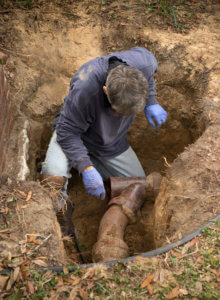
Drain pipes made of clay are prone to invasive tree or plant roots.
- Failure: Clay pipes are very prone to invading plant and tree roots. The joints of the pipe can leak if a blockage causes pressure to build up, thus collapsing the pipe. Clay breaks in big pieces so once it breaks, soil pours in which results in constant blockages and potential backups(a sewer failure). Plant roots work their way into the joints and cling to the outer surface of the pipe. In some soils, the pipe can shift and sag, come apart, or crumble.
Cast Iron Pipes – Cast iron pipes have been used since the early 1800s for water distribution. Quality cast iron pipes can last 75-100 years and most homes built before the 70s are equipped with them. We have seen failure as early as 25 years. Coastal regions with high salt content also accelerate corrosion.
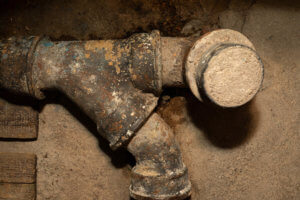
Drain pipes made of cast iron are prone to rust and cracks.
- Failure: Cast iron, like all metal, rusts when exposed to water and oxygen. So with sewer pipes, those variables are unavoidable without proper maintenance. Shifting soils, tree roots, and especially chemicals like drain cleaner, can damage them over time.
Orangeburg Pipe (Fiber Conduit) – Orangeburg pipes are made of wood pulp and pitch. Used because they were cheap, easy to cut, and weighed less than clay pipes, they were a common material during the late 1930s.
- Failure: Said to last as long as 50 years, they are known to fail in fewer than 10 years. In some places, they are no longer considered an acceptable material. They are made of wood fibers meaning they can warp, collapse, and tree roots can invade them easily. Some methods of cleaning pipes, such as Hydro-jetting, can damage or destroy Orangeburg.
PVC (Polyvinyl Chloride) – In the early 1970s, plastic sewer pipes became the best choice for new sewer lines and repair. It’s simple to install, cheap, and easy to transport. They fit tighter and tree roots rarely get into the joints.
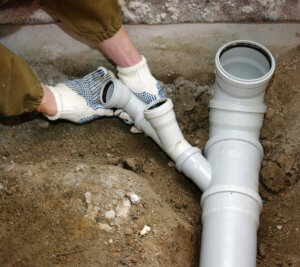
Drain pipes made of PVC last longer than most other materials, but are still vulnerable to damage.
- Failure: Nothing is perfect, and that could include the installation process. If PVC is not properly installed or the joints are not glued correctly, the pipes can fail. Underground debris and rocks can lead to friction, which in turn can damage the PVC pipe. PVC does have a breaking point despite being flexible.
How do you determine if your drain pipes are failing?
There are many signs to look for that indicate your drain pipes need repair or complete replacement. Some visible signs that you may be able to notice yourself are;
- Excessive sewer backups
- Sewer odor
- Mold
- Slow drains
- Extra green grass
- Foundation cracks
- Insects or rodents
If you notice these signs, you should take the next step to find the source of the problem and the best solution.
CCTV sewer camera inspection – New Flow Plumbing can look inside your pipes and find the mystery. We’ll know exactly where it is and offer the best solution. CCTV inspections are easy and non-destructive, meaning we do not dig up anything to find out what’s going on inside the drain pipe.
We look for obstructions, collapses, build-up, and cracks or breaks, finally providing you with a report of the condition of the pipe. Upon request, we even give you give a copy of the video inspection recording if you give us a USB on-site.
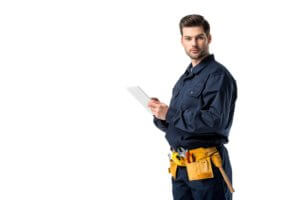
A sewer camera inspection can find the source of the problem, followed by a estimate and report.
Hydro-jetting – Because plungers and snakes can only clear out surface clogs, we can use Hydro-jetting. It is a relatively new, innovative cleaning solution for clogged pipes and sewer lines. It uses up to 4,00 PSI of water pressure to clean out your pipes.
Hydro jetting can expose cracks and holes in your pipe to see its true condition. Sometimes a CCTV inspection doesn’t show the condition of the pipe because it is full of water (not draining properly).
Smoke/Vapor Testing – This method involves pumping smoke through your plumbing system and look for plumes of smoke exiting via cracks or other defects. This can find the source of the problem in your pipes, especially pipes that run under your yard, so we do not have to tear up your property in search of the crack. This is non-invasive and can be done without affecting the household.

Smoke/Vapor testing can see where the problem come from in your drain pipes.
So now that the problem is found, what then?
Trenchless sewer repair
What is trenchless sewer repair? Compared to conventional sewer repair, which involves digging long trenches to access and replace the pipe, trenchless technology avoids tearing up your floor or yard. We only have to go through a cleanout or dig a small 4ft by 4ft pit to access the end of a pipe.
There are two methods of trenchless sewer repair. Each of them has a few factors that determine if they are the appropriate solution, such as the pipe’s structural integrity.
The two methods are;
- Pipe bursting – This form involves feeding in a new pipe into your old one, breaking it apart as it replaces it.
- Pipe lining – With pipe lining, we insert an epoxy-impregnated liner into your old pipe, and it inflates pressing the epoxy against the old pipe. Then the liner is removed and you now have a new pipe inside of your old one.
Read also – Why Trenchless Sewer Repair is Worth The Cost
Call us today to receive a CCTV sewer camera inspection and an estimated quote. Ask us about any ongoing specials as well!

